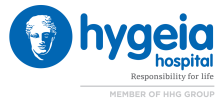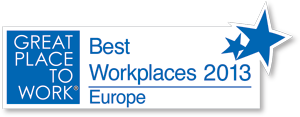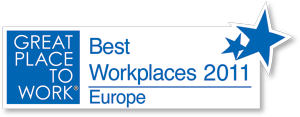- HYGEIA
- Vision & Mission
- Timeline
- Organizational structure
- Press Releases
- Social responsibility
- Awards and Distinctions
- Human Resources
- Scientific & Training activities
- Articles – Publications
- Our Facilities
- Magazines
- Healthcare Programs
- Doctors
- Services
- Medical Divisions & Services
- Imaging Divisions
- Departments
- Units
- Centers of Excellence
- Emergency – Outpatient
- Nursing Service
- Ambulances
- Patients
International Patient Safety Goals
International Safety GoalsWhy they are important to usWhat we do at HYGEIAIdentifying patients correctly
Globally, wrong or incomplete patient identification is the main cause of errors in cases of medication administration, blood transfusion, medical exams or surgical procedures.
- Patient verification and identification must be performed for all HYGEIA Hospital inpatients and outpatients.
- Identification must be carried out by all health professionals prior to coming into contact or performing a procedure on a patient.
- We use two identifiers for verification: the patient’s FULL NAME and their FULL DATE OF BIRTH.
- A band bearing the two identifiers is placed on the wrist of every patient when they are admitted.
Improve Effective Communication
Effective communication among health professionals limits the risk of errors and contributes toward improving patient safety. Miscommunication may have a significant effect in the case of medical instructions given orally or over the phone, critical exam results given orally or over the phone, and patient delivery (e.g. from shift to shift or from department to department).
- All medical instructions and critical exam results given orally must be recorded by the recipient, who must repeat them. These must then be confirmed in writing within 24 hours by the doctor giving them and must be included in the patient medical file.
- For patient delivery, we use standard tools and forms, in line with distinguished international organizations, so as to ensure complete and proper transmission of all critical clinical information concerning the patient (e.g. patient diagnosis and current condition, recent or expected changes in their condition or treatment, major issues that may arise in the near future, etc).
Improve the Safety of High-Alert Medications
High-risk medications (HRM) are pharmaceutical products or types of medications which carry a greater risk of causing damage to humans if they are not used correctly. They include:
- Medications that are internationally associated with a high percentage of errors, such as insulin, heparin and chemotherapeutic agents.
- Medications with similar-sounding names, or similar packaging and markings, such as Xanax and Zantac.
- To keep employees up to date, the HYGEIA Hospital Pharmaceutical Committee keeps a list of HRMs, which it evaluates and reviews annually.
- Before being stored away in the various departments, a distinct label (orange) is placed on HRMs so they may stand out.
- Prescriptions for HRMs are entered in the patient medical file in CAPITALS, so may they stand out from the rest of the medications.
- Especially for concentrated electrolyte solutions, before they are administered to a patient, the clinical pharmacist must check the need for their administration and the concentration of the solution.
Ensure Safe Surgery
A wrong surgical procedure performed on a wrong site and on a wrong patient is an alarmingly frequent occurrence in hospitals. Factors that contribute to such mistakes include miscommunication among the members of the surgical team, lack of proper processes in place to verify the elements of the procedure, inadequate assessment of the patient and inadequate review of the patient’s medical history.
We implement the Universal Protocol instituted by the Joint Commission, which sets out the following:
- Preoperative verification of information: patient identification before and during their transfer to the operating room and confirmation of signed consent for the specific procedure and for administration of anesthesia.
- Marking of the anatomical site (wherever necessary).
- Time-out (final confirmation) performed by the surgical team and World Health Organization (WHO) forms filled out before the procedure starts.
Reduce the Risk of Health Care-Associated Infections
Hand hygiene is the most significant factor for preventing and controlling infections within a hospital. It aims at preventing the spread of bacteria from patient to patient, as well as from patient to staff and the hospital surroundings. It may be achieved by:
- Washing your hands with soap and water
- Using alcohol-based sanitizers
- Using gloves
- We have adopted and implement internationally accepted hand-hygiene guidelines (WHO, CDC, etc).
- We ensure that the health professionals adhere to the proper hand-hygiene guidelines and we constantly improve our performance with suitable actions for raising awareness.
- We implement a continuous education and training program for health professionals.
- We educate and update our patients and visitors/relatives on the main principles of infection prevention.
Reduce the Risk of Patient Harm Resulting from Falls
Patients are often faced with the risk of falling due to pain, instability, medication use, vision impairment, prolonged bed rest, etc. In hospitals, patient falls constitute the most frequent category of undesired incidents/accidents that may lead to injury, complications or extended hospitalization.
- The risk of falls must be evaluated for all the patients and, depending on the score, measures must be taken to prevent a fall or reduce the risk of injury following a possible fall.
- Whenever a fall incident takes place anywhere within HYGEIA Hospital, the clinical protocol for fall management is activated, which aims at reducing the negative impact of the fall on the patient and immediately handing any possible complications.
- After each such an incident, the fall is recorded in detail so that the factors which contributed to the incident may be investigated and a new patient management plan may be put in place.
- © 2007-2024 HYGEIA S.M.S.A.
- Personal Data Protection Policy
- COOKIES Policy
- Terms of Use
- Privacy Policy
- Credits
- Sitemap
- Made by minoanDesign
Ο ιστότοπoς μας χρησιμοποιεί cookies για να καταστήσει την περιήγηση όσο το δυνατόν πιο λειτουργική και για να συγκεντρώνει στατιστικά στοιχεία σχετικά με τη χρήση της. Αν θέλετε να λάβετε περισσότερες πληροφορίες πατήστε Περισσότερα ή για να αρνηθείτε να παράσχετε τη συγκατάθεσή σας για τα cookies, πατήστε Άρνηση. Συνεχίζοντας την περιήγηση σε αυτόν τον ιστότοπο, αποδέχεστε τα cookies μας.
Αποδοχή όλων Άρνηση όλων ΡυθμίσειςCookies ManagerΡυθμίσεις Cookies
Ο ιστότοπoς μας χρησιμοποιεί cookies για να καταστήσει την περιήγηση όσο το δυνατόν πιο λειτουργική και για να συγκεντρώνει στατιστικά στοιχεία σχετικά με τη χρήση της. Αν θέλετε να λάβετε περισσότερες πληροφορίες πατήστε Περισσότερα ή για να αρνηθείτε να παράσχετε τη συγκατάθεσή σας για τα cookies, πατήστε Άρνηση. Συνεχίζοντας την περιήγηση σε αυτόν τον ιστότοπο, αποδέχεστε τα cookies μας.




































